The XL2 Watchdog
Introduction
|
> top of page < |
XL2 Fields of View Comparison
by Chris Hurd
Recently I had an opportunity to set up a tripod on the deck behind my house and point an XL2 toward a nearby pasture. Using an assortment of Canon XL lenses and Sigma 35mm still photo lenses with the Canon EF Adapter, the variety of fields of view is quite interesting. What follows is a sampling of the same image, that is, the same target as seen by the stationary camera; with fields of view ranging from wide to telescopic.
These Two Images Are Exactly The Same


Only their aspect ratios and fields of view are different. Above left, the field of view as seen from an XL2 mounted with a Canon XL 3x Wide Angle lens in 16:9 mode. Above right, you're seeing the exact same image -- the camera has not moved. Now the XL2 is mounted with a Sigma EF 300mm still photo lens coupled with a Canon EF Adapter and an XL 1.6x Extender in 4:3 mode. Without moving the camera, we've gone from a very wide field of view on the left (with an old farm tractor just barely visible in the center background) to a super-extreme telephoto on the right (where you can actually count the alternator fan blades on that same tractor).
Fields of View Comparison: Choose Your Lens
There are eight lens combinations on this page, with about forty representative frames in both 16:9 and 4:3 aspect ratios. You can use the links below to jump to a specific lens, or just scroll down this entire page. For each lens, its actual focal length is stated in bold while certain focal lengths stated in italics represent their corresponding 35mm equivalent fields of view. The maximum aperture at each end of the lens is included as well.
Canon XL 3x Wide Angle
Canon XL 16x Manual
Canon XL 16x Manual with 1.6x Extender
Canon 20x L IS Auto
Canon 20x L IS Auto with 1.6x Extender
Sigma EF 28mm - 80mm with Canon EF Adapter
Sigma EF 70mm - 300mm with Canon EF Adapter
Sigma EF 70mm - 300mm with Canon EF Adapter and 1.6x ExtenderThese images are intended to accurately portray only their respective fields of view and aspect ratios. Please do not judge color or any other visual factors based on the quality of these images. It took awhile to shoot all of them and since this was done nearing sundown, the light was changing rapidly. Full size images are not required in order to properly convey fields of view; therefore they were sacrificed in order to allow this page to load as quickly as possible, given that the large number of images used to compose this page.
Canon XL 3x Wide Angle
3.4mm f/1.8 full wide
16:9 = 26.6mm / 4:3 = 32.6mm
10.2mm f/2.2 full tele
16:9 = 79.8mm / 4:3 = 97.8mm




Top row: Canon 3x full wide in 16:9 and 4:3
Bottom row: Canon 3x full tele in 16:9 and 4:3Canon XL 16x Manual
5.4mm f/1.6 full wide
16:9 = 43.1mm / 4:3 = 52.8mm
86.4mm f/1.6 full tele
16:9 = 689.6mm / 4:3 = 844.8mm

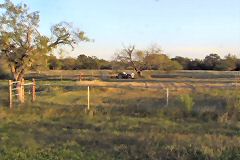
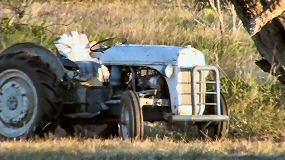

Top row: Canon 16x Manual full wide in 16:9 and 4:3
Bottom row: Canon 16x Manual full tele in 16:9 and 4:3Canon XL 16x Manual with 1.6x Extender
8.6mm f/1.6 full wide
16:9 = 68.9mm / 4:3 = 84.5mm
138.2mm f/1.6 full tele
16:9 = 1,103.3mm / 4:3 = 1,351.7mm




Top row: Canon 16x Manual w/1.6x Extender full wide in 16:9 and 4:3
Bottom row: Canon 16x Manual w/1.6x Extender full tele in 16:9 and 4:3Canon 20x L IS Auto
5.4mm f/1.6 full wide
16:9 = 42.3mm / 4:3 = 51.8mm
108mm f/3.5 full tele
16:9 = 846mm / 4:3 = 1,036mm




Top row: Canon 20x L IS Auto full wide in 16:9 and 4:3
Bottom row: Canon 20x L IS Auto full tele in 16:9 and 4:3Canon 20x L IS Auto with 1.6x Extender
8.6mm f/1.6 full wide
16:9 = 67.7mm / 4:3 = 82.9mm
173mm f/3.5 full tele
16:9 = 1,354mm / 4:3 = 1,658mm
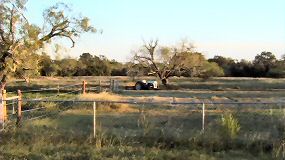
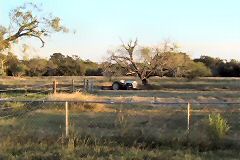
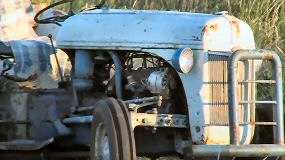

Top row: Canon 20x L IS Auto w/1.6x Extender full wide in 16:9 and 4:3
Bottom row: Canon 20x L IS Auto w/1.6x Extender full tele in 16:9 and 4:3Sigma EF 28mm - 80mm with Canon EF Adapter
28mm f/3.5 full wide
16:9 = 218mm / 4:3 = 269mm
50mm f/4 medium
16:9 = 390mm / 4:3 = 480mm
80mm f/5.6 full tele
16:9 = 624mm / 4:3 = 768mm



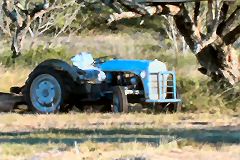


Top row: Sigma 28mm - 80mm full wide in 16:9 and 4:3
Middle row:Sigma 28mm - 80mm at 50mm in 16:9 and 4:3
Bottom row: Sigma 28mm - 80mm full tele in 16:9 and 4:3Sigma EF 70mm - 300mm with Canon EF Adapter
70mm f/4 full wide
16:9 = 546mm / 4:3 = 672mm
100mm f/4 medium
16:9 = 780mm / 4:3 = 960mm
135mm f/4.8 medium
16:9 = 1,053mm / 4:3 = 1,296
200mm f/4.8 medium
16:9 = 1,560mm / 4:3 = 1,920
300mm f/5.6 full tele
16:9 = 2,340mm / 4:3 = 2,880




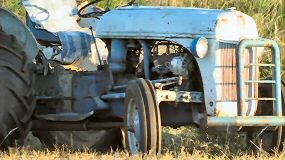



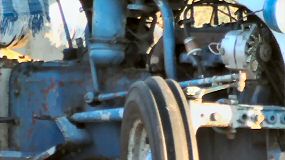
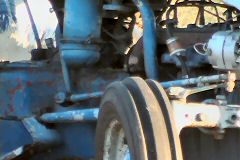
Top row: Sigma 70mm - 300mm full wide in 16:9 and 4:3
Second row: Sigma 70mm - 300mm at 100mm in 16:9 and 4:3
Third row: Sigma 70mm - 300mm at 135mm in 16:9 and 4:3
Fourth row: Sigma 70mm - 300mm at 200mm in 16:9 and 4:3
Bottom row: Sigma 70mm - 300mm full tele in 16:9 and 4:3Sigma EF 70mm - 300mm with Canon EF Adapter and 1.6x Extender
320mm f/4 full wide
16:9 = 2,496mm / 4:3 = 3,072mm
480mm f/5.6 medium
16:9 = 3,744mm / 4:3 = 4,608mm




Top row: Sigma 70mm-300mm at 200mm w/ 1.6x Extender in 16:9 and 4:3
Bottom: Sigma 70mm-300mm at full tele w/ 1.6x Extender in 16:9 and 4:3For anyone who feels compelled to know, the tractor is a Model 2N produced by the Ford Motor Company in 1946. It has a four-cylinder 116 cu.in. engine which produces 28 horsepower. It is a close twin of the earlier pre-war Model 9N farm tractor. In the World War Two era, from 1939 through 1947 nearly 300,000 9N's and 2N's were built, the majority of which are still in use today, including this one. They were affordable, robust, easy to drive and easy to work on. They all featured the famous Ferguson System three-point hitch. Attached to the hitch in these images is a Hawse five-foot shredder, which is by far the most frequently used implement on small acreage Central Texas properties such as mine.
Back to the XL2 Articles Menu.
Thrown together by Chris Hurd.
Please direct questions to the DV Info Net Community Forums.
Where to Buy: These dealers are authorized DV Info Net sponsors... | |||
|
|
|
|
|
|
|
|
Please support this site by making your purchases through them. Thanks! | |||
©1998-2008 DV Info Net
The Digital Video Information Network
San Marcos, Texas
For success, attitude is equally as important as ability.